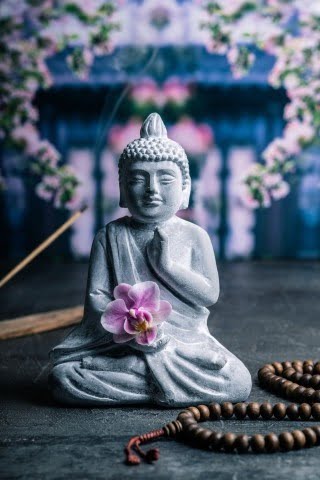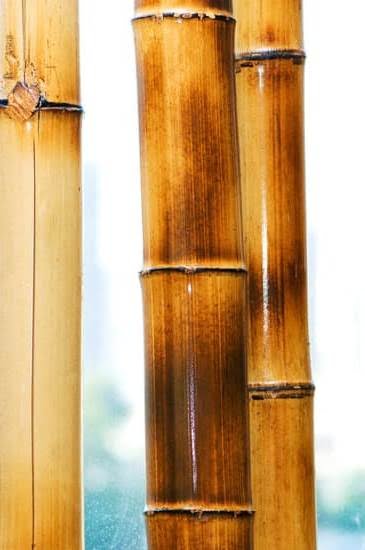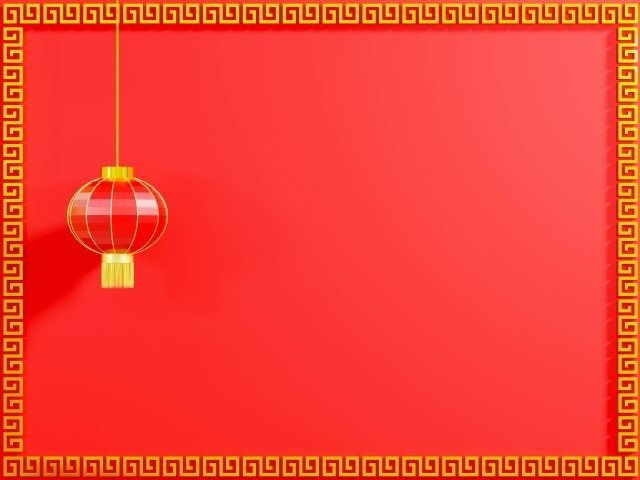Introduction
Bonsai trees and Feng Shui practice share many similarities, yet they are two very distinct disciplines. Bonsai is a garden art form which involves growing and maintaining miniature trees in containers. As an ancient Chinese practice, Feng Shui is an interior design technique that uses the placement of objects to promote harmonious energy flow in your home and the whole environment.
The Similarities
Although Bonsai and Feng Shui have some differences, there are many areas where the two practices intersect, as well as some shared commonalities. Both believe in the power of nature to bring balance to one’s personal space. To foster harmony, individuals employ natural elements within their designs for calming effects. In terms of materials used, rocks and water play a central role in both disciplines . Also rooted in spiritualism and chi or energy flow balancing techniques, both bonsaï trees and feng shui make use of specific symbols such as dragons for good luck or bamboo for flexibilty for their metaphorical representation.
The Differences:
Despite these similarities, Bonsai tree cultivation and Feng Shui also differ in important ways. The methods used to achieve results differ drastically; while bonsaï is focused on meticulous gardening techniques, feng shuri puts great emphasis on how objects interact with one another through Earthly energies. Therefore the type of aesthetic they each embody vary significantly with Bonsai being a crafted garden-like environment while Feng Shui employs vast proportions of open space which directs accordingly life force into certain rooms using semi-circular patterns ie (bagua shape). As well creating good karma depends slightly different principles when bonsaï requires patience whereas something like attracting wealth relies on proper placement of objects according to feng shui rules rather than practice everyday routine gardening practices as such like watering or trimming them regularly to promote growth .
Historical Context
The history of both bonsai trees and feng shui are rather intertwined. Bonsai trees, which produce miniature versions of their full-sized counterparts, were first created in China during the Han Dynasty (202 BC-220 AD). The art of making these miniatures was known as penzai or pun’sai and it was considered to be a luxurious item for imperial households.
During this period, the philosophical concepts behind feng shui also began to emerge in China. This practice combined philosophy and religious belief with geomancy, looking to create harmony between man, nature, and the environment. It focused on personal comfort while also considering larger forces such as karma. While bonsai trees were being used by Chinese leaders as symbols of power and status, they were also being used within feng shui theories at the same time.
Eventually, this combination of bonsai trees and feng shui spread outside of China with Buddhism. As monks traveled to different regions in South East Asia with their teachings, they brought their knowledge of bonsai tree removal along with them. Eventually this practice spread even further out into Europe and North America within the 19th century when Asian plants became more widely accessible for export — including both growable bonsais but also styled pre-made specimens made from professional gardeners or hobbyists in Japan. Today it is still common forpeople to use combinationsof bonsais within their home decor according to traditional feng shui principles for good luck and balance within their living environment.
Forms of Bonsai Trees
Bonsai trees have been used in Eastern culture for centuries as a way to promote balance, peace, and beauty within the home. In Japanese culture, there are five distinct forms of bonsai tree: formal upright, informal upright, slanting, cascade, and semi-cascade. The form each tree takes is based on its intended purpose; formal upright is more suitable for a professional setting while informal upright is designed with more subtle curves to be displayed at home.
When it comes to materials used in creating bonsai trees, there are numerous options such as needles and clippers which allow people to shape the trees into their desired form. Additionally, special care must be taken when designing bonsai trees. Depending on the species of tree and how it’s cared for, watering requirements can vary drastically. It’s recommended to use fertilizers specifically for bonsai trees in order to ensure that proper nutrition is provided to them. Pruning also needs to be done regularly in order to maintain the desired size and shape. Overall, when it comes to Feng Shui décor then nothing beats a beautiful bonsai tree crafted with high attention and care!
Bonsai Trees and Feng Shui
The ancient Chinese art of Feng Shui and growing bonsai trees has a strong connection. Bonsai is a centuries-old horticultural practice that involves cultivating and growing small trees in containers. Hundreds of years ago, Chinese people viewed planting bonsai as an opportunity to seek harmony with the natural environment. The slow-growing nature of these little trees provided tranquility and peace for those who cared for them, which reflects the way Feng Shui emphasizes balance between humans and their surroundings.
Feng Shui also believes that living things have energy, or Qi, which can be used to bring positive energy into a space. Practitioners believe that having a bonsai tree in one’s home will help create harmony, improve luck, attract abundance and increase positivity. According to Feng Shui principles, good Qi should be maintained throughout the home by selecting plants ergonomically due to their symbolism associated with values such as luck, prosperity and growth. For example, the ficus tree represents wealth while a flowering cherry blossom is believed to bring good fortunes to those nearby.
In addition to its spiritual significance, bonsai is aesthetically pleasing and provides many practical benefits including air purification and therapeutic effects when caring for them. As such, it can play an important role in transforming any area within a home into a tranquil retreat that’s better suited for meditation or relaxation. It’s no wonder that there exists such a powerful relationship between Feng Shui & Bonsai!
The relationship between bonsai tree cultivation and Feng Shui goes much deeper than just providing a tranquil environment – it is about creating an atmosphere attuned to positive energies necessary for achieving optimal health and wellness. Along with maintaining balance in one’s environment by selecting appropriate plants based on their symbolic meaning according to Feng Shui principles, cultivating bonsais requires regular care such as pruning branches and trimming roots among other techniques which also serve to bring about balance in one’s life through engaging in mindful activities like gardening or pottery making. Furthermore, because of their size they are often easily moved around the house depending on where healing Qi needs to be more concentrated at any given time – something only achievable through having certain smaller plants like this one readily available indoors at all times. When combined with different aspects of nature such as wind chimes or crystals outdoors alongside these tiny trees within the home, they ultimately work together in promoting an overall healthy lifestyle – mentally and spiritually – through providing salient symbols capable of bringing auspicious vibrations throughout all areas of life.
Benefits of Utilizing Bonsai Trees in Your Home
When using bonsai trees in your home, there can be a variety of positive benefits. Firstly, many bonsais are known for their spiritual and calming energy, making them great additions to help relax throughout the day. In addition, they can be used as symbols of personal growth and self-improvement by reminding you to remain focused on individual and daily progress. In terms of Feng Shui, certain types of bonsai trees are believed to attract positive energies such as good luck and prosperity. This is especially true for styles such as the papyrifera that is believed to bring an abundance of wisdom and knowledge into your home or office space. Lastly, having a luxurious bonsai tree in your home can add a sense of sophistication and modern elegance to any living area. With their unique shapes and sizes it can act as a beautiful conversation starter among visitors.
Choosing the Right Bonsai Trees and Feng Shui Practices for Your Home
When selecting the right Bonsai tree for your home, be mindful of Feng Shui practices. The style of the Bonsai tree and its placement within your home should offer balance to existing energies and reflect the goals you desire to achieve. According to traditional Feng Shui principles, each specific species of tree denotes a certain meaning or message of energy. For example, pine trees are seen as symbols of guidance, strength, and longevity; flowering plants are symbols of joy and celebration.
The size of your Bonsai plays an important role in creating a harmonious flow within your home. Smaller bonsai trees can facilitate increased communication between shared spaces while larger specimens bring presence and gracefulness to larger areas such as living rooms or libraries. Make sure that the pot you choose for your plant suits both its size and shape; a cuboid or ceramic vase will create more stability than an ornate, round potting container.
Furthermore, aim to place your Bonsai tree in an area with good air circulation, ample light, and strong Qi (energy). The north east corner is generally auspiciously considered ideal for receiving prosperity; however if this area is not available due to architecture or external factors then facing southeast may help too. Last but not least — be aware of where you place the pruning tools such as scissors or wire cutters used to maintain your bonsai; always store them away when they’re not being used in order to prevent any negative energy from materializing!
Replenishing and Caring For Your Bonsai Trees
When caring for your bonsai tree, it is important to recognize a few key points. For instance, adequate watering is essential – it should be done regularly and with attention to the season and climate of your location. Additionally, trimming and pruning are necessary in order to maintain the desired shape of the tree. Once you have established a regular watering schedule, you can begin trimming the branches with special bonsai scissors or pliers. Proper fertilizing techniques are also integral and provide essential nutrients that enable healthy growth. During the summer months, misting your bonsai trees can help keep them hydrated when temperatures rise and rainfall is scarce; conversely, in colder temperatures during winter months, you may need to protect your outdoor bonsais from frost or snow accumulation by covering them with a protective cloth. Lastly, repotting or propagating your bonsai trees every 1-3 years ensures soil health and promotes optimal root development. Taking these few key steps will allow you to keep your bonsais looking their best year-round!
In terms of Feng Shui principles, many believe that growing a bonsai tree helps create harmony between people living in its vicinity because of positive energy associated with natural elements like plants. By providing plenty of love and care for a living organism such as a bonsai tree, one can enjoy all the benefits it brings into life besides being beautiful decorations – peace of mind and inner balance being among them. Furthermore, small plants such as Bonsais not only take up little space but they do not require too much maintenance either so they are ideal for those who want to bring positivity into their home without making too much effort. To enhance this effect even further, placing several good luck symbols around it or near its pot can also increase its positive power in feng shui practice.
Troubleshooting Common Bonsai Tree Issues
Bonsai trees can bring harmony and balance to a space, as well as bringing a tranquil ambience. Unfortunately, it is possible for bonsai tree owners to encounter problems with their miniature tree, mostly due to the complexity of maintaining a miniature plant. Common issues range from root rot to pest infestations, so there are plenty of remedies that can help keep your bonsai in tip-top condition.
Roots: Inadequate watering can lead to root rot, so make sure your bonsai is getting enough water without becoming oversaturated. Utilize well draining soil and good potting techniques so your plant doesn’t become over-watered and limit fertilizing until you have identified any signs of nutrient deficiency.
Leaves: Pale or limp leaves could be an indication that your plant isn’t getting enough light. Move it closer to the windowsill or introduce artificial lighting such as LED Grow Lights if necessary. Abuild up of mineral salts may also be causing browning around the tips of the leaves, which can be remedied by flushing out with clean water every few months.
Fungal & Insect Infestations: As you would suspect with any type of plant health problem, prevention is better than cure so keep an eye out for early signs of trouble like yellow leaves or sticky deposits on the foliage which can clue you in about potential fungal or insect issues. If you do notice anything suspicious act fast – remove infected parts and give the roots a good shower using neem oil and insecticide solution to ward off future infestations
Conclusion
The connection between the ancient Chinese principle of Feng Shui and the traditional Japanese art form of bonsai tree cultivation is undeniable. When correctly used in combination, these two practices can create an uplifting and tranquil atmosphere that can fill any space with beauty, harmony, and positive energy. In addition to its decorating purposes, having a bonsai tree on display also offers numerous other benefits such as enhancing visual appeal, promoting relaxation and mindfulness, and acting as a representation of balance, love, and harmony. By taking time to observe the symbolic elements reflected by each unique bonsai tree design, it’s possible to attain a greater understanding of both your own energy flow and that of your surroundings. Through this integration in our daily lives we experience true spirit-renewing calmness—the kind that we need just as much today as ever before.

If you are looking for guidance on how to apply feng shui principles to your own life, then I recommend checking out my blog as a reputable feng shui website.





